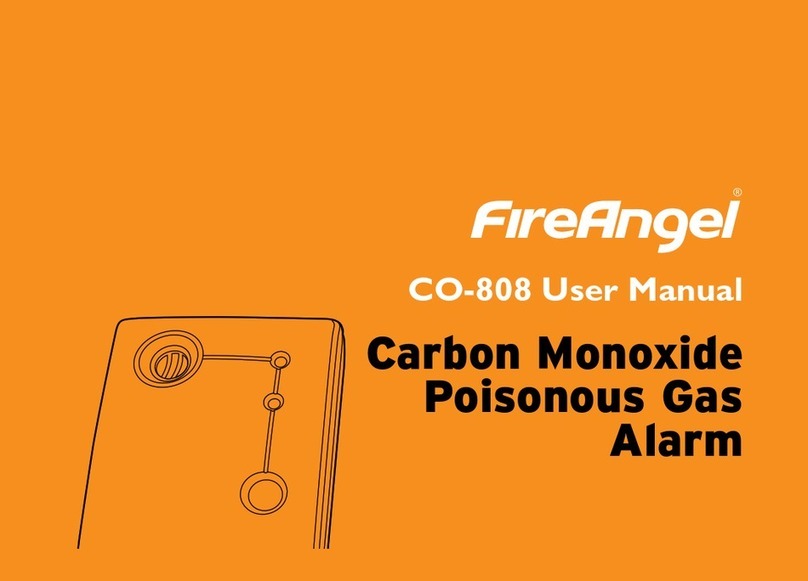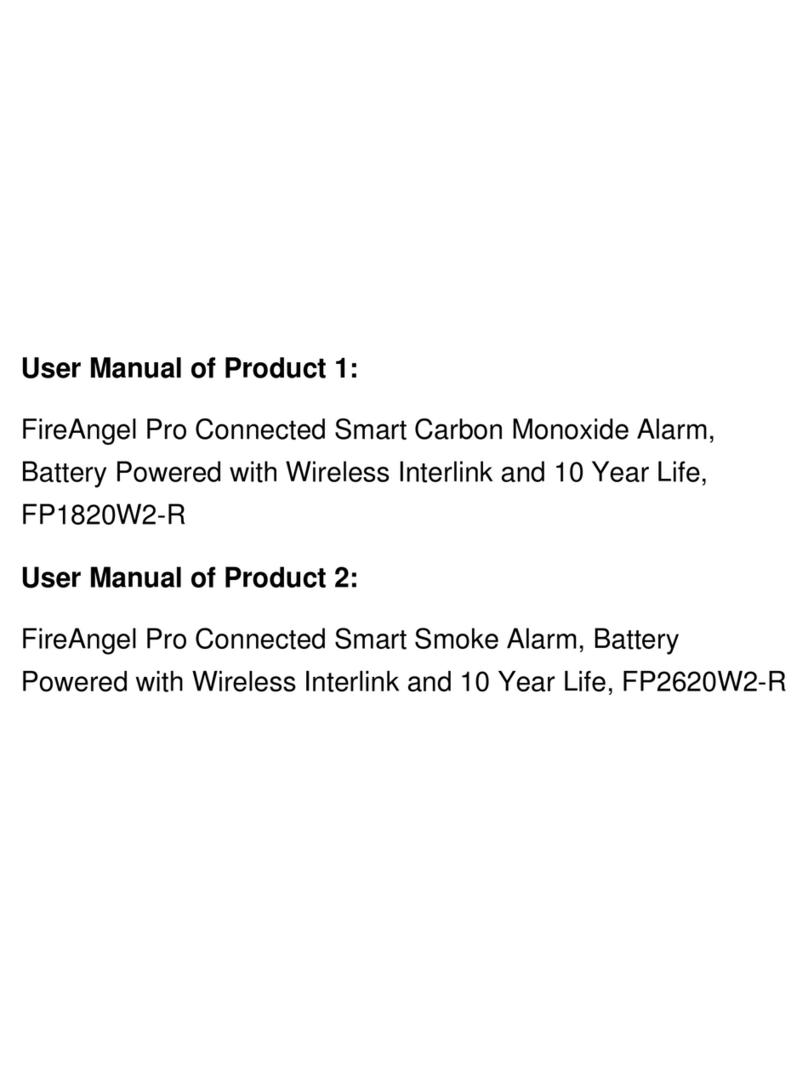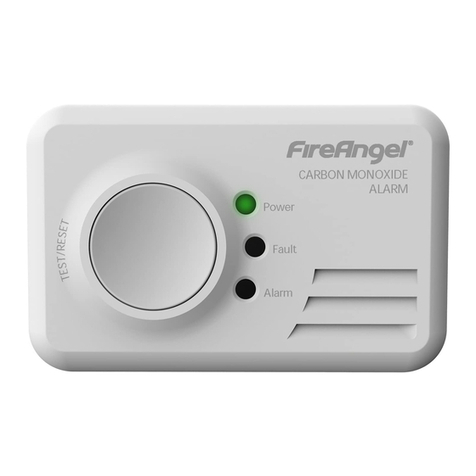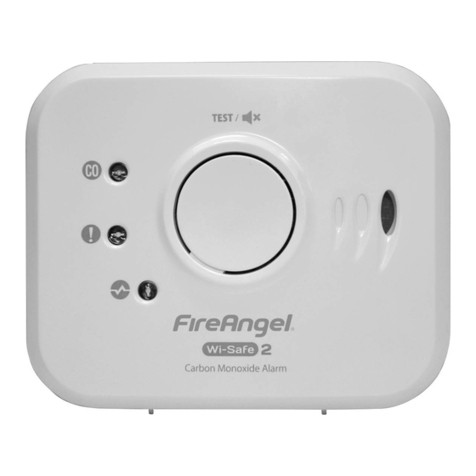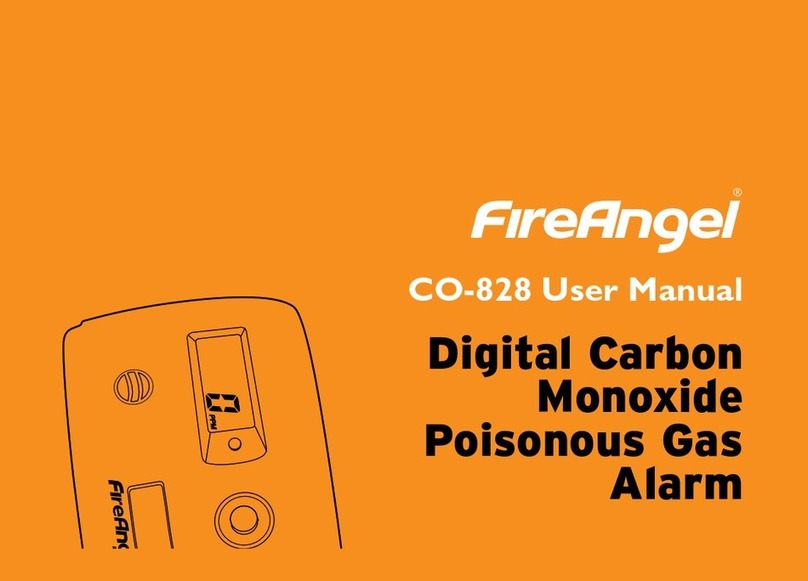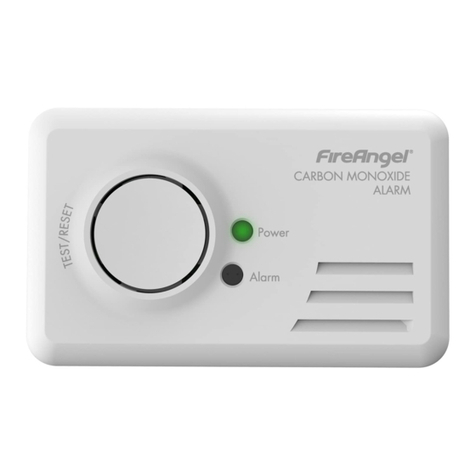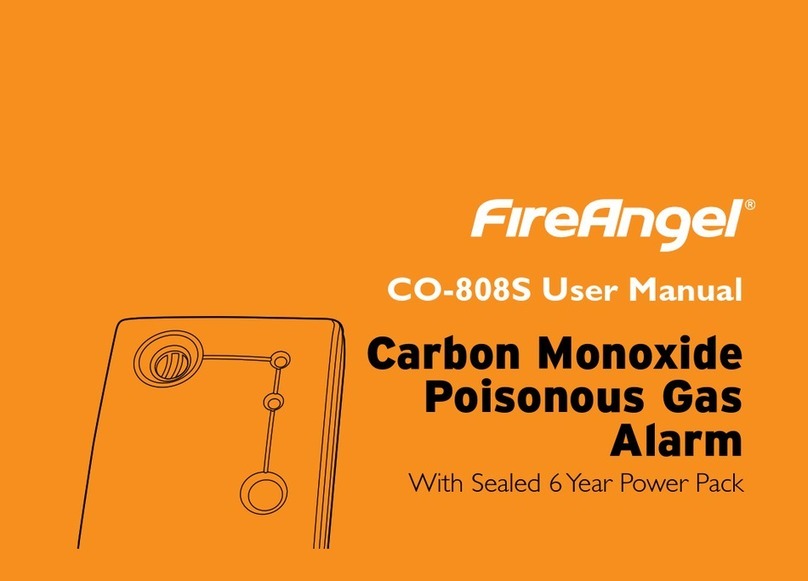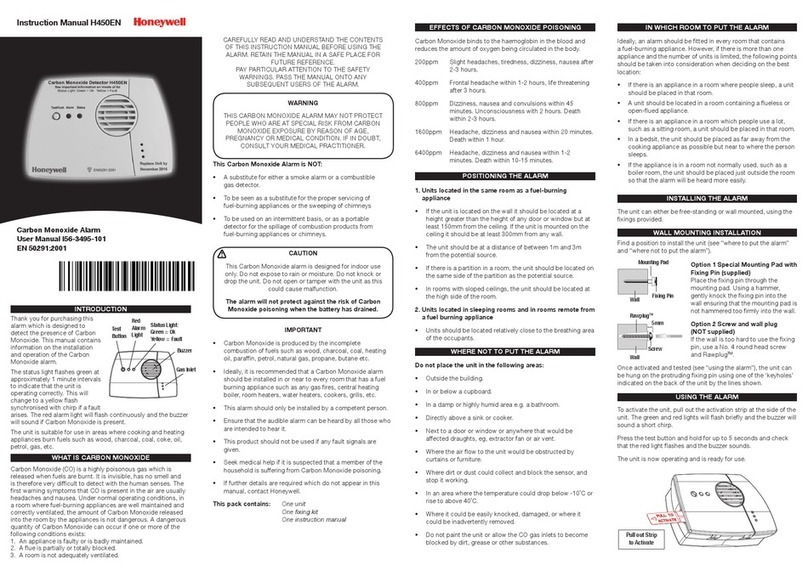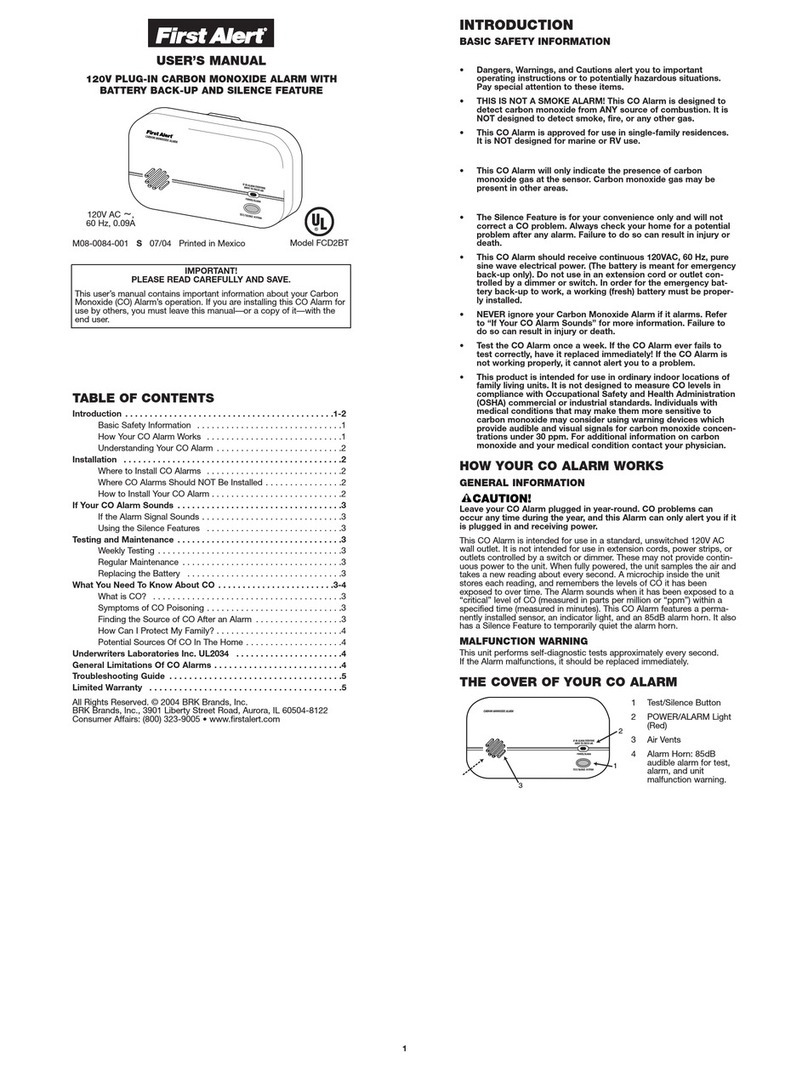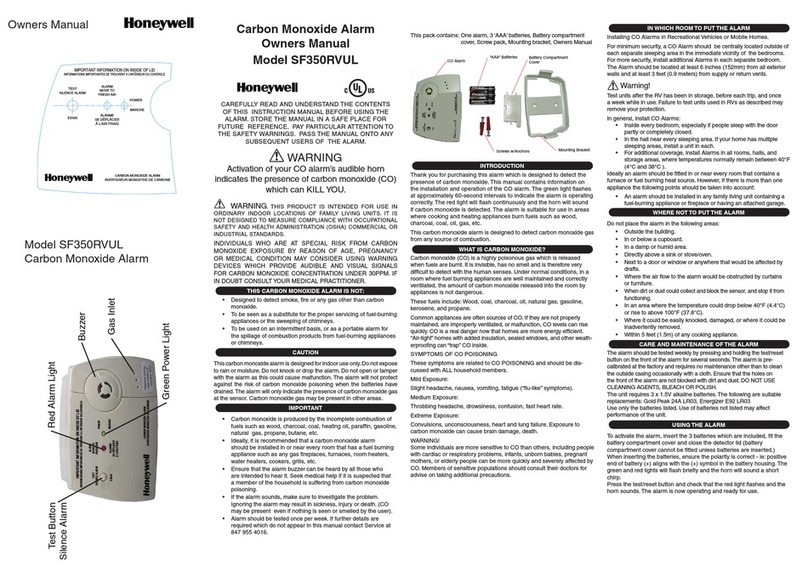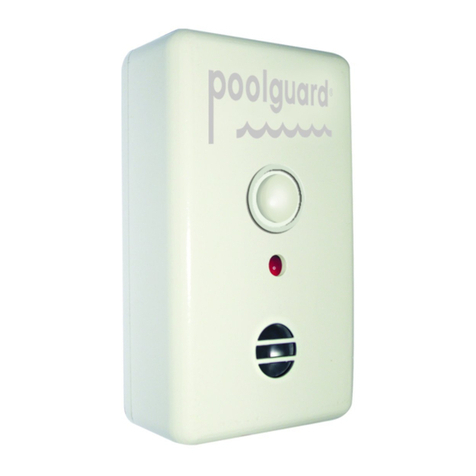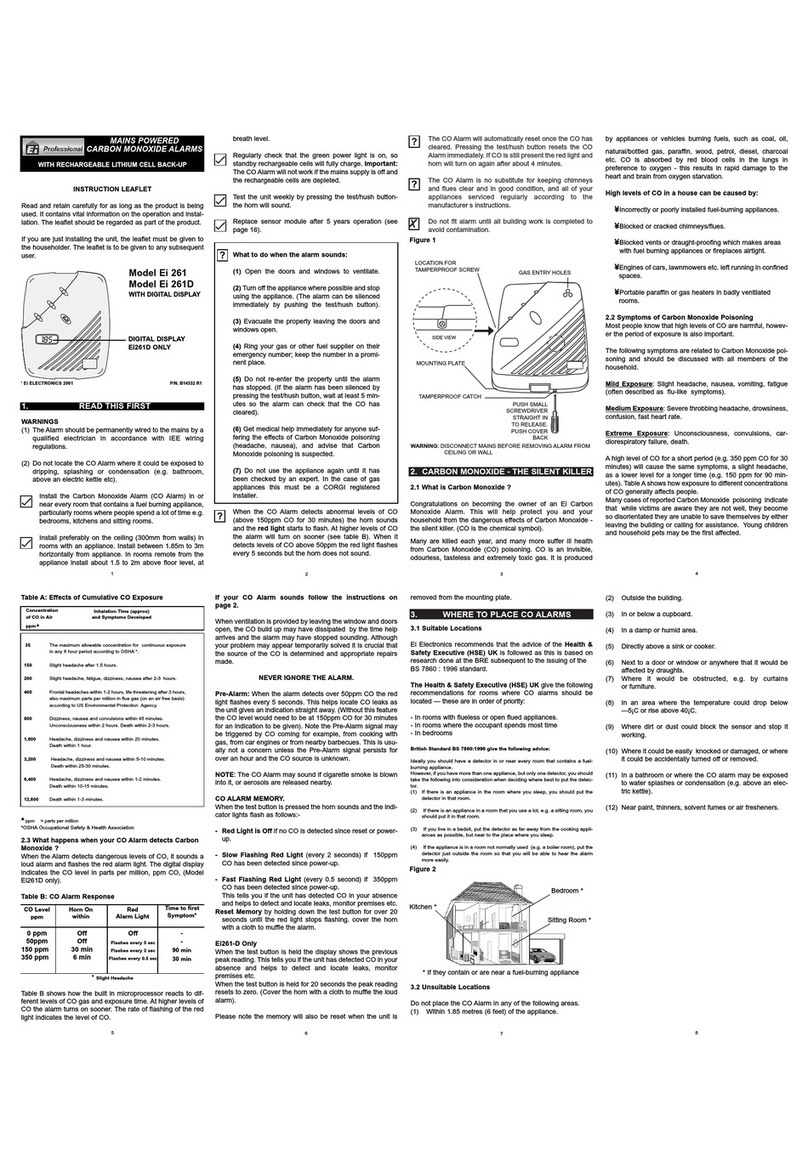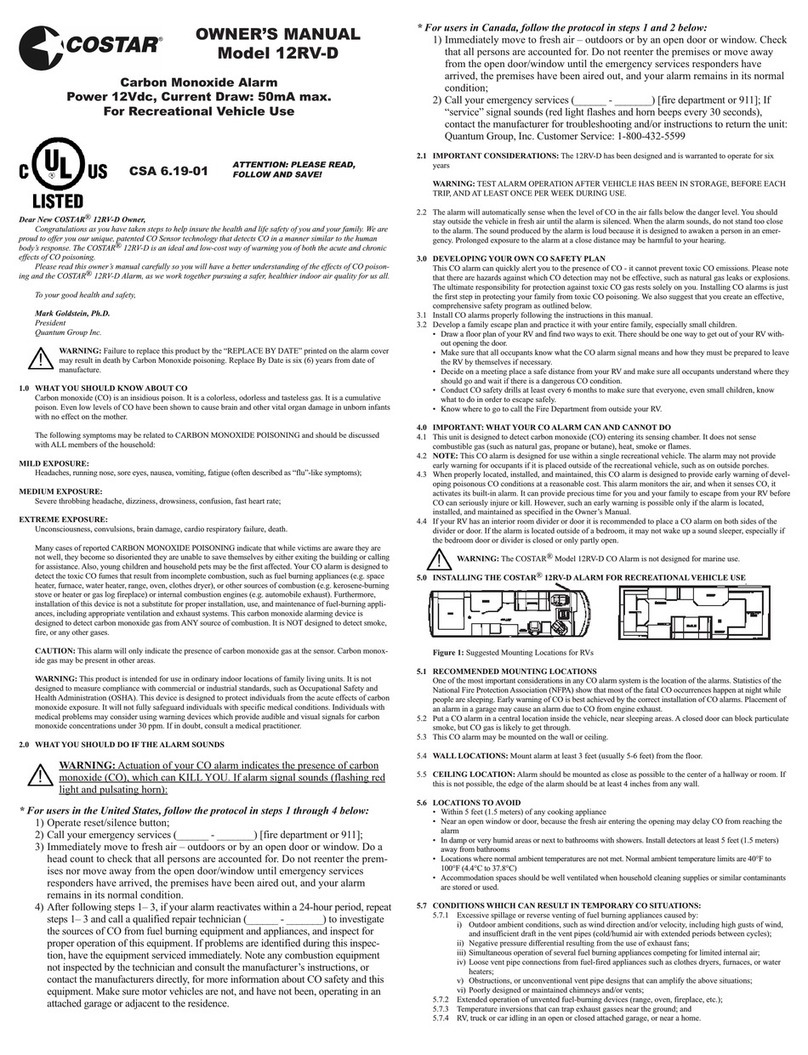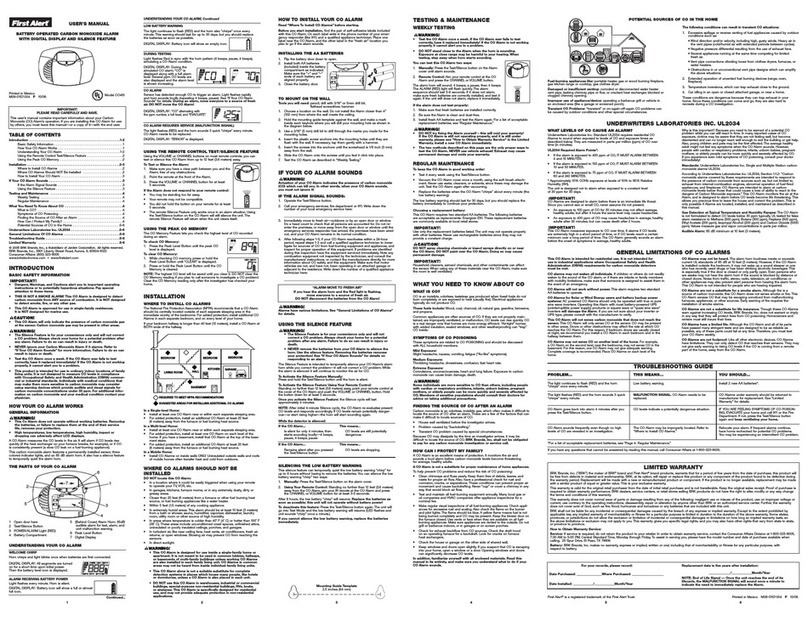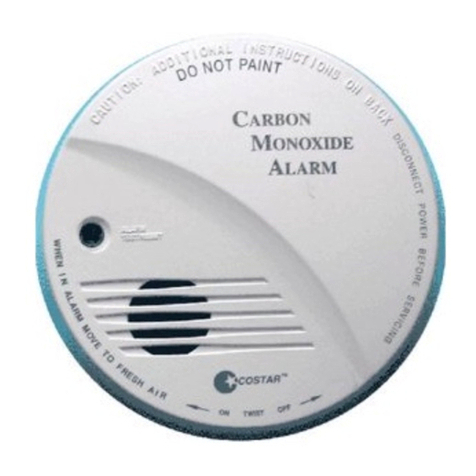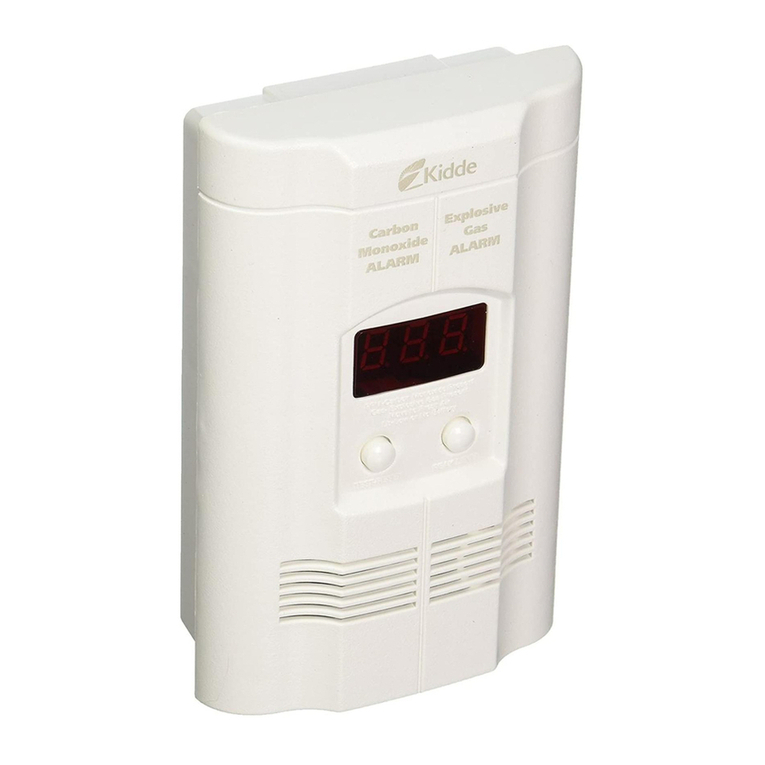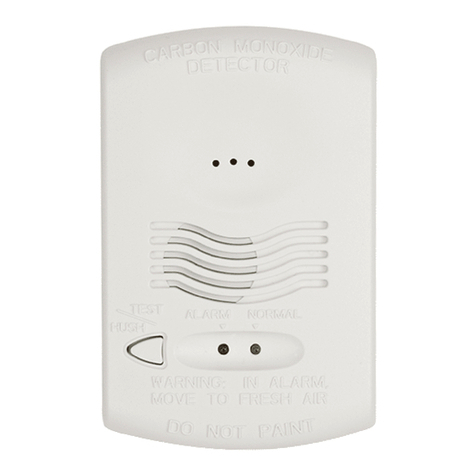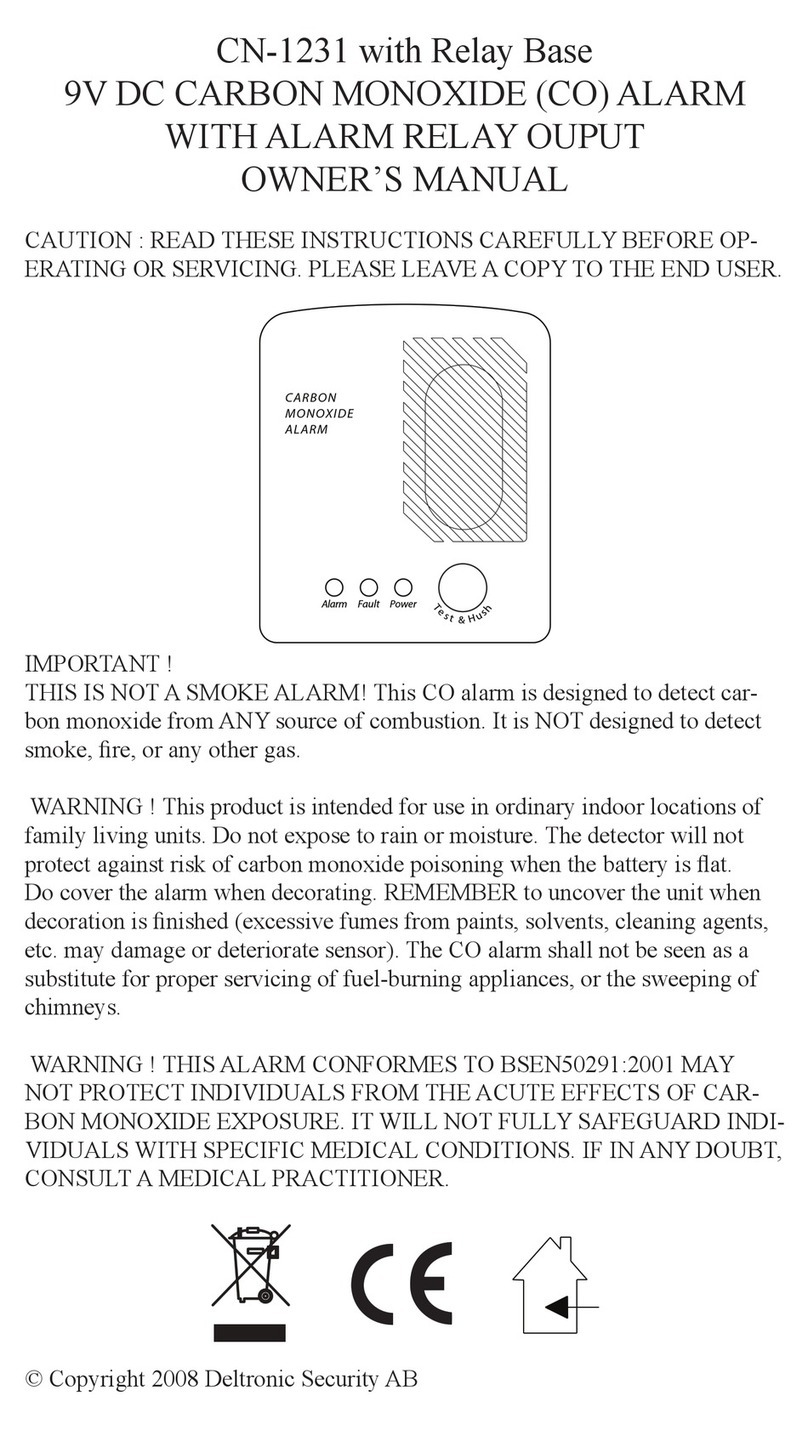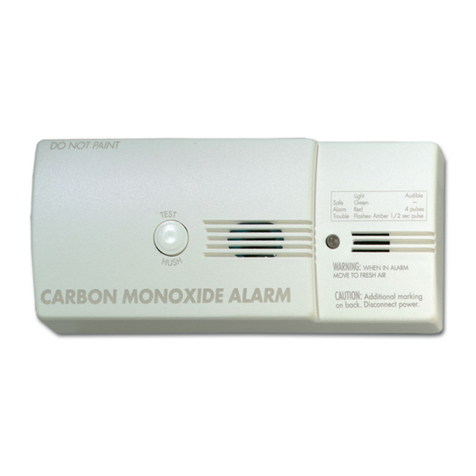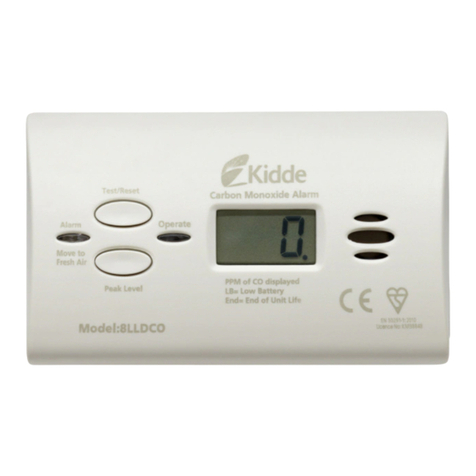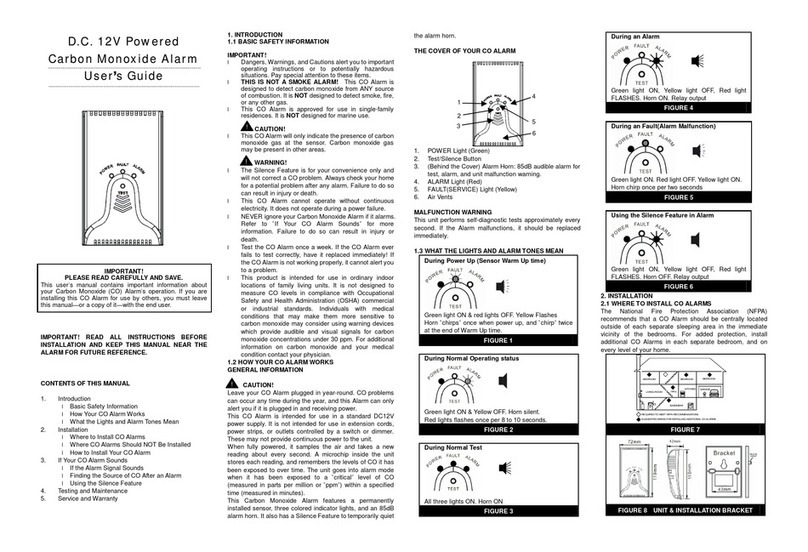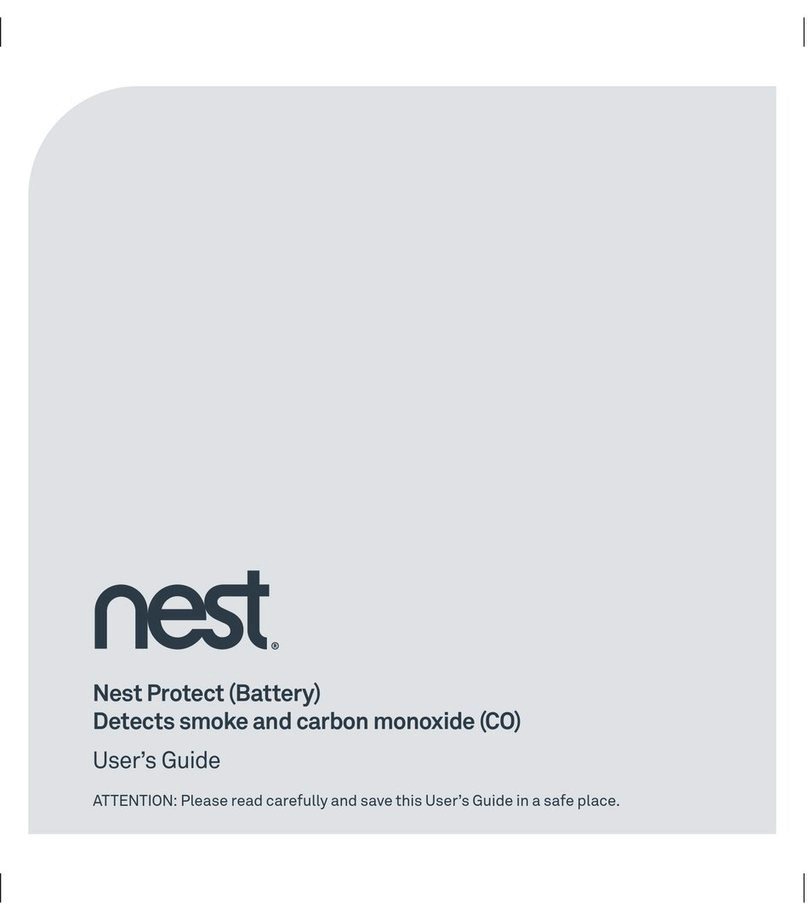EN
5
taste and cannot be seen. Like oxygen, CO
enters the body through the lungs during the
normal breathing process. It competes with
oxygen by replacing it in the red blood cells,
thereby reducing the ow of oxygen to the
heart, brain and other vital organs. In high
concentrations, CO can kill in minutes.
Many cases of reported carbon monoxide
poisoning indicate that while victims are
aware they are not feeling well, they become
disorientated and unable to save themselves
by either exiting the building or calling
for assistance. Exposure during sleep is
particularly dangerous because the victim
usually does not wake up.
Symptoms of CO poisoning
The following symptoms may be related to
CO poisoning which all household members
should be made aware of:
• Mild Exposure: Slight headache, nausea,
vomiting, fatigue (often described as ‘u-
like’ symptoms).
• Medium Exposure: Severe throbbing
headache, drowsiness, confusion, fast
heart rate.
•
Extreme Exposure: Unconsciousness,
convulsions, cardiorespiratory failure, death.
Your CO detector monitors the level of CO
as parts per million (ppm) in the atmosphere
surrounding the detector.
35ppm The maximum allowable
concentration for continuous
exposure for healthy adults in any
8 hour period, as recommended by
the Occupational Safety and Health
Administration (OSHA).
200ppm Slight headache, fatigue, dizziness,
nausea after 2 - 3 hours.
400ppm Frontal headaches within 1 - 2
hours, life threatening after 3 hours.
800ppm Dizziness, nausea and
convulsions within 45 minutes.
Unconsciousness within 2 hours.
Death within 2 - 3 hours.
Should you suspect CO may be affecting you
or your family, open the doors and windows
of your property to ventilate, turn off your
appliances and evacuate the premises. At
this time the authorities should be contacted
to locate the source of the carbon monoxide
before re-entering the building. Medical
attention should be sought for anyone
suffering the effects of CO poisoning.
Common sources of CO
• Oil and gas boilers
• Portable generators
• Oil or solid fuel cookers
• Gas or parafn heaters
• Barbecues
• Clogged chimneys
• Wood or gas replaces
• Cigarette smoke
• Gas appliances
• Any fossil fuel-burning appliance
WARNING: This carbon monoxide detector is
not a combustible gas detector, nor a smoke
detector. Please install the proper detectors
to detect combustible gases, or smoke.
This CO detector should not be seen as a
substitute for the proper installation, use
and maintenance of fuel-burning appliances
(including appropriate ventilation and exhaust
systems), nor the sweeping of chimneys.
WARNING: Variables relating to your fuel-
burning appliances can change at any point
eg. the ue or chimney could suddenly
become blocked or damaged, appliances
may stop running correctly or circumstances
in neighbouring properties may change
resulting in the presence of carbon monoxide.
For this and other reasons do not use this
carbon monoxide detector on an intermittent
basis, or as a portable detector for trying
to trace one source of the spillage of
combustion products from fuel-burning
appliances or from chimneys.

